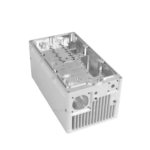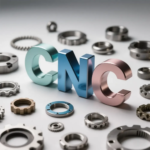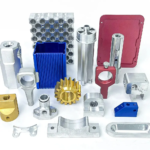3D printing has revolutionized the manufacturing sector with its ability to produce complex geometries and customized objects. As the technology continues to evolve, two notable methods stand out: Material Jetting with Multi-Jet Fusion (MJF) and Selective Laser Sintering (SLS). Both techniques present unique advantages, yet they cater to different applications and needs. In this article, we will delve into MJF and SLS by comparing their strengths, speed, and suitability for 3D-printed parts.
## Overview of MJF and SLS
Before diving into the comparison, it’s essential to understand the fundamental principles behind each technology.
### What is MJF?
Material Jetting, specifically Multi-Jet Fusion, is a 3D printing technology developed by HP. It utilizes inkjet technology to deposit a liquid binding agent onto a powder bed. After the binding agent is applied, heat is used to fuse the powder particles together, layer by layer. This method can produce high-detailed parts with excellent mechanical properties, capable of being used in functional applications.
### What is SLS?
Selective Laser Sintering, on the other hand, employs a laser to sinter powdered material—usually nylon or polyamide—layer by layer. The laser scans across the powder bed, melting the particles together at precise points. Once a layer is complete, a recoating blade spreads a new layer of powder over it, and the process repeats. This method is particularly renowned for creating durable parts with excellent thermal resistance.
## Strength: MJF vs. SLS
When it comes to strength, the two technologies exhibit different profiles depending on the specific material used and the intended application.
### MJF Strength Characteristics
MJF boasts impressive isotropic strength, meaning the mechanical properties are consistent across all directions. This uniformity arises from the process itself, where fine powders are bound together with a liquid and fused with heat. Parts produced using MJF are known for their toughness, resilience, and satisfactory performance under impact and stress. Furthermore, the texturing and surface finish are typically superior, making MJF a strong contender for applications requiring high aesthetics along with functional integrity.
### SLS Strength Characteristics
SLS is renowned for producing parts with excellent mechanical properties, especially for applications that demand high strength-to-weight ratios. The laser sintering process results in molecular interlocking between the powder particles, which enhances strength and durability. While SLS parts are also generally isotropic, their strength can vary based on factors like layer height, scan speed, and powder characteristics. SLS parts are often the go-to choice for end-use applications in automotive and aerospace sectors, where strength and durability are paramount.
### Verdict on Strength
Both MJF and SLS produce strong parts; however, MJF tends to edge out SLS in applications where surface finish and uniformity are critical. SLS can still compete robustly, particularly for functional parts that endure harsh conditions.
## Speed: MJF vs. SLS
When evaluating these two technologies, speed can greatly impact productivity and turnaround time in a production environment.
### MJF Speed Advantages
The MJF process is known for its rapid production capabilities. Since multiple jets can simultaneously deposit binding agents over a broad area, MJF can achieve faster build times and higher production rates. Furthermore, because MJF incorporates a heating step to solidify the powder, the overall cycle time is decreased, allowing for faster post-processing and delivery.
### SLS Speed Considerations
SLS processes are typically slower than MJF mainly due to the time required for the laser to scan and sinter each layer. Each layer must be completed before a new one is added, which can lead to longer production times, especially for larger parts or high-resolution prints. Moreover, the cooling phase can also lengthen the build time, as SLS parts need to cool gradually to avoid warping.
### Verdict on Speed
In terms of speed, MJF clearly has the advantage. It allows for more efficient production, making it suitable for high-volume manufacturing where time is of the essence.
## Better for 3D Printed Parts: MJF vs. SLS
To determine which method is better for 3D-printed parts, we must evaluate their unique qualities and applications.
### Capabilities of MJF
MJF excels in creating high-volume production runs while offering a superior surface finish and intricate details. It is particularly suitable for producing aesthetic components, prototypes, and parts that require some level of functional testing. The ability to use a variety of colors and materials also broadens its appeal.
### Capabilities of SLS
SLS is advantageous for producing mechanically robust parts. It is ideal for applications that require functional testing, including engineering prototypes, end-use components, and applications requiring rigorous mechanical properties. SLS is particularly attractive in industries like aerospace, automotive, and industrial applications where durability and performance are critical.
### Application Scenarios
The choice between MJF and SLS often boils down to the specific application requirements. For parts that prioritize aesthetics with good overall strength, MJF stands out. Conversely, if mechanical strength and thermal resistance are paramount, SLS becomes the preferred method.
## Cost Comparison: MJF vs. SLS
Another critical factor to consider when choosing between MJF and SLS is the associated costs for production.
### MJF Cost Considerations
While the initial investment for MJF printers may be higher, the efficiency of faster print times can lead to cost savings in the long run. Moreover, the capability to produce multiple parts simultaneously can also reduce costs related to labor and post-processing.
### SLS Cost Considerations
SLS systems are often less expensive to purchase compared to MJF, but production times can increase operational costs due to longer print cycles. Furthermore, high-quality SLS materials can add to the overall cost, particularly for specialty requirements.
### Cost-Effectiveness Verdict
In terms of cost-effectiveness, MJF may provide better long-term value due to its speed and efficiency in high-volume production. SLS could still be more advantageous for small batch production with demanding performance specifications.
## Final Thoughts: Choosing Between MJF and SLS
Choosing between MJF and SLS ultimately depends on the specific requirements of your project.
– If you need high-quality finishing with quick lead times, MJF may be the preferred choice.
– If your focus is on strength, durability, and performance in demanding applications, SLS is the way to go.
Both technologies have their strengths, and understanding the nuances of each will empower you to make aesthetically and functionally appropriate decisions for your 3D printing projects. As advancements continue in additive manufacturing, it is likely that more refined techniques will emerge, further reshaping the landscape of 3D printing technology.
Daguang focuses on providing solutions such as precision CNC machining services (3-axis, 4-axis, 5-axis machining), CNC milling, 3D printing and rapid prototyping services.










